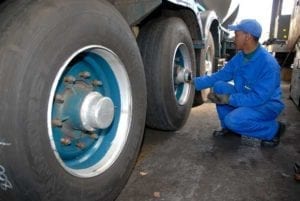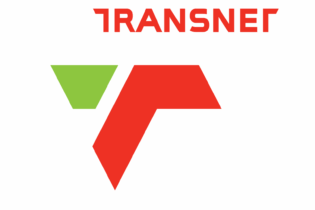There are several factors that impact tyre life. A number of these factors were commented on by Hiroshi Nakanishi, Bridgestone general manager: Field Engineering and Technical Services, and Nobuzwe Mangcu, South African Tyre Manufacturers Conference (SATMC) managing executive.
Before going any further, it must be noted that all tyres sold in South Africa must comply with the compulsory specifications for tyres as published in Government Notice No.R1125 of 16 November 2001 appearing in Government Gazette 2282. NitrogenHN The use of nitrogen is fleet-dependant and can have positive effects. However, sometimes nitrogen is not always available on the route operated on. TWA tip: To date, over 350 filling stations in South Africa offer free nitrogen top-ups. Wheel alignment and balancing
HN Proper and regularly planned alignment and tyre balancing for both truck tractor and trailer ensure even tread wear. NM Regularly check wheel alignment and balance. The balance of the tyre/rim assembly is critical to achieving good wear profiles. Vehicle loads/overloading HN Vehicles should never be overloaded above the legal load axle limits. Loads should be evenly distributed and always secured to prevent movement of the load. Overloading and resultant over-deflection will cause tyre durability issues. Route planning
HN Tyres react to the road and to the conditions in which they are used. A fleet of vehicles designed to drive on the highways should be equipped with tyres suited to those operating conditions. Tyre wear can increase if alternative routes, with more ‘stop and go’ type driving is used.
NM In addition to the above, make sufficient time for rest periods to prevent driver fatigue.
Profiles, manufacturing dates and speed ratingsHN Always ensure the tyre size and profile are correct as per original vehicle specification. Ensure the tyre load index/speed symbol is equal to or higher than what is specified as original equipment fitment. Manufacturing dates are specified on the tyre sidewall. Vehicle tracking/monitoring
HN If a fleet operation is managed according to a specific set of boundary conditions, and drivers deviate from these by travelling their own routes, it can impact on the ultimate tyre life that is expected versus what is actually achieved. This also ties in with driver training, with regard to routes to be used, speed limits, and road regulations. NM Monitor your vehicles, making sure drivers are adhering to agreed routes, time of travel, road speed, and vehicle regulations. Summary TWA tip: Commercial vehicle tyres are optimised for specific categories of operation, and selecting the right kind of tyre for the intended application is a primary consideration. This requires a good working knowledge of your fleet’s activities and routes. A fleet manager must look at the total mileage driven over an extended period to adequately evaluate tyre resistance, traction levels, and other tyre specification requirements. A fleet manager must also consider how often and when to rotate a vehicle’s tyres. Remember that tyres are exposed to chemicals, mud, and debris, which leads to rubber deterioration. Wash the tyres while the vehicle is being washed, taking special care to include inside dual tyres. Differences in tyre prices can be due to the differences in construction and types of polymers used in their construction. Since complex design and construction elements are not visible to the naked eye, manufacturers can easily copy a popular tread pattern. These tyres might look the same, but are made without the benefit of extensive research and development, testing, and engineering.








